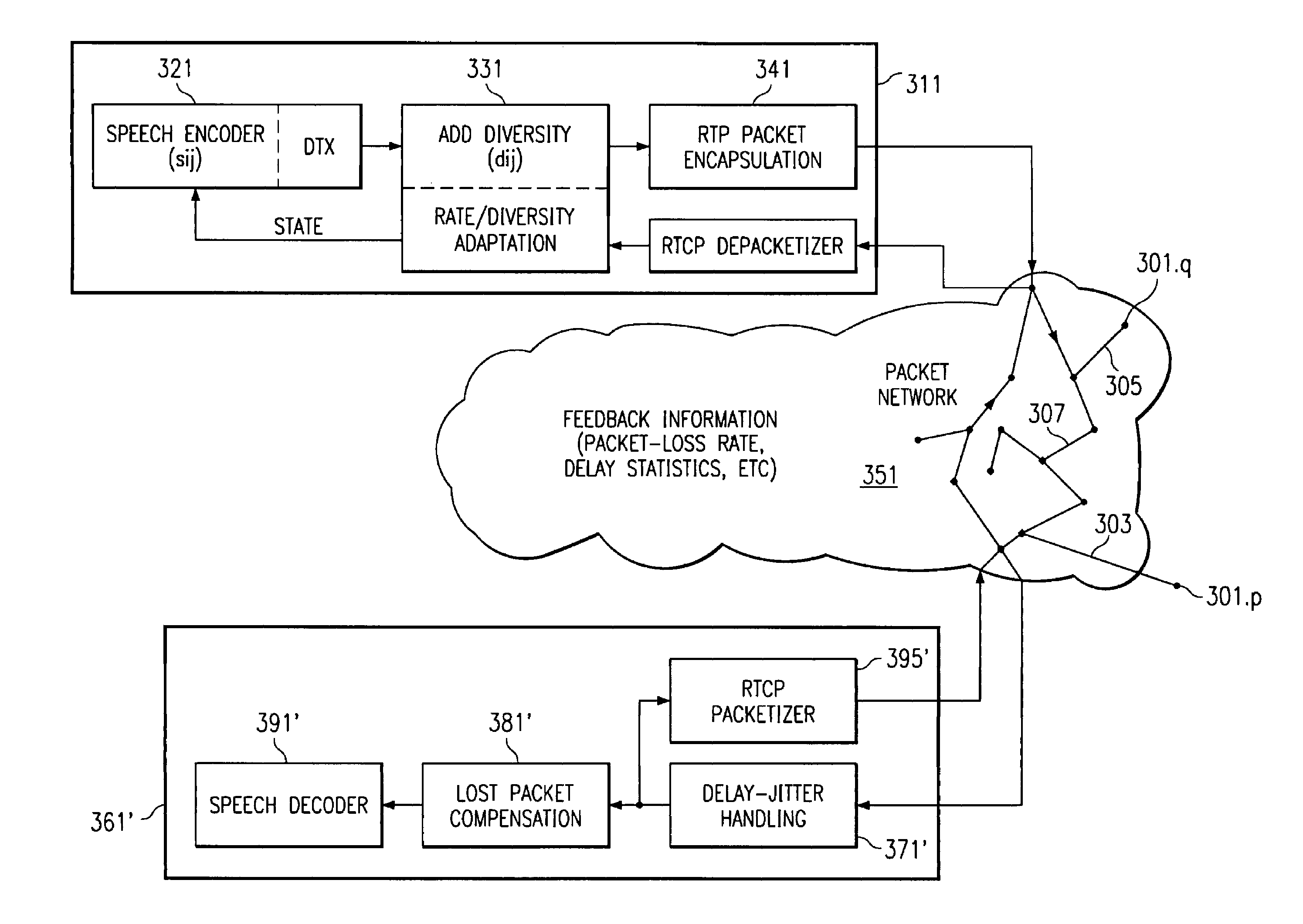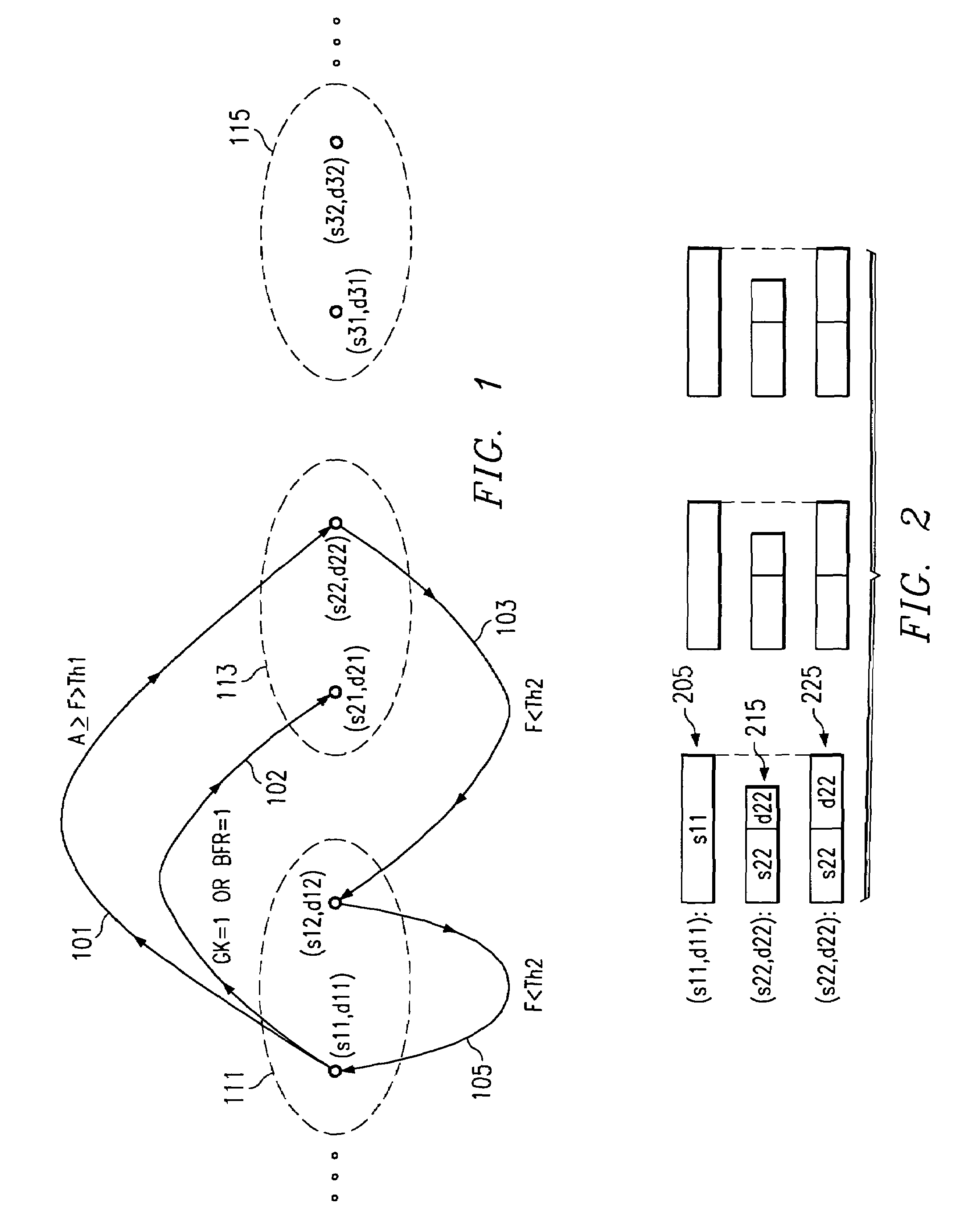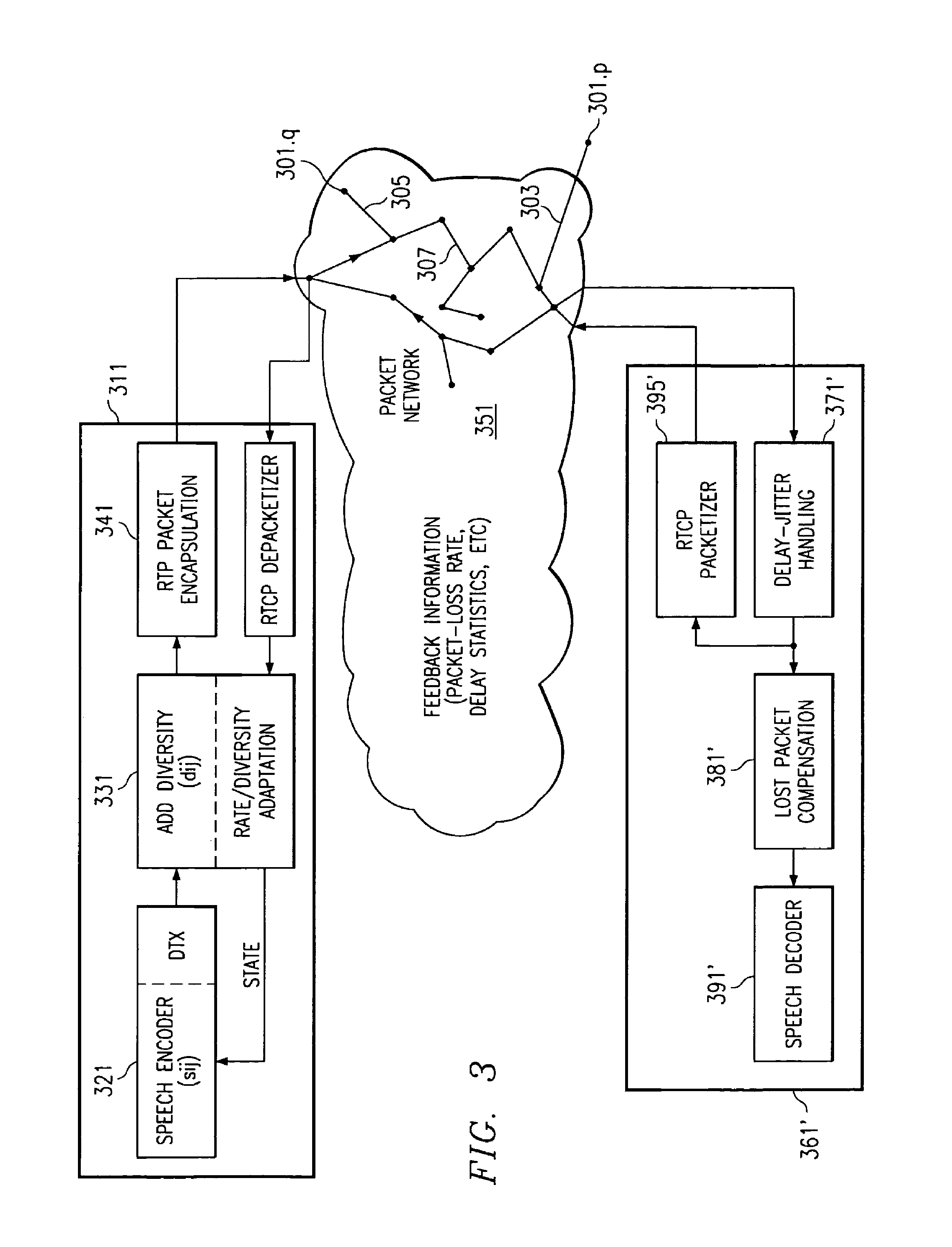Reconstruction excitation with LPC parameters and long term prediction lags
a reconstruction excitation and long-term prediction technology, applied in the field of integrated circuits, networking, systems and processes for packet communication, can solve problems such as delay jitter, packet loss, and packets that may even be actually lost, and never reach their destination
- Summary
- Abstract
- Description
- Claims
- Application Information
AI Technical Summary
Benefits of technology
Problems solved by technology
Method used
Image
Examples
embodiment 1
[0113]With no pulses in secondary stage. Using G.729, the secondary stage (redundancy stage) has these Important Parameters—LPC (Linear Predictive Coding) parameters, LTP (Longterm Prediction) lags, parity check, and adaptive and fixed codebook gains—according to the sequence
P(n)P(n−1)′ P(n+1)P(n)′ P(n+2)P(n+1)′ P(n+3)P(n+2)′
[0114]1A. Reconstruction with single packet loss is shown in the next sequence below. The LPC parameters, LTP lags, parity check, and adaptive and fixed codebook gains are obtained from the secondary stage. The excitation reconstruction mechanism is suitably made to be the replacement excitation generation scheme described in the G.729 standard section 4.4.4 with the following modification. For lost-frames considered as nonperiodic, the adaptive codebook contribution is set to zero only if the absolute value of the adaptive codebook gain (obtained from the secondary stage) is less than 0.4, otherwise the adaptive codebook contribution is reconstructed from the a...
embodiment 2
[0118]With pulses in secondary stage. Using G.729, the secondary stage (redundancy stage) has LPC parameters, LTP lags, parity check, and adaptive and fixed codebook gains, and first few or all fixed codebook pulses.
[0119]2A. In reconstruction with single packet loss, the LPC parameters, LTP lags, adaptive and fixed codebook gains, and the included pulses are obtained from the secondary stage. The remaining fixed codebook pulses are set to zero.
[0120]2B. Reconstruction with two or more consecutive packet losses reconstructs the packet (n+2) as described in the paragraph 2A just above. The packet (n+1) is reconstructed by the G.729 frame erasure concealment scheme specified in the G.729 standard section 4.4, used for packet loss concealment, when there is no diversity.
[0121]Multiple-description data partitioning based diversity embodiments are described next.
[0122]It is believed that heretofore there has been no CELP-based multiple description process. Herein are described computatio...
embodiment 3
[0125]with no pulses in the base or important information. Using G.729, the first stage has LPC parameters, LTP lags, parity check, adaptive and fixed codebook gains, and every other fixed codebook pulses. The second stage has LPC parameters, LTP lags, parity check, adaptive and fixed codebook gains, and the remaining fixed codebook pulses. See sequence below:
P(n)P(n−1)′ P(n+1)P(n)′ P(n+2)P(n+1)′ P(n+3)P(n+2)′
[0126]3A. In reconstruction with single packet loss, for packet n and packet (n+1), only one stage is used for reconstruction, and the remaining fixed codebook pulses are set to zero (note that these pulses include the fixed codebook pulses from the lost diversity stage). See reconstruction below:
[0127]
Received:P(n)P(n − 1)′[Lost Packet]P(n + 2)P(n + 1)′P(n + 3)P(n + 2)′Reconstructed:[P(n)|-](excitation)[P(n + 1)′|-](excitation)P(n + 2) + P(n + 2)′P(n + 3) + P(n + 3)′(The plus (+) sign refers to combination of information for reconstruction).
[0128]3B. Reconstruction with two or...
PUM
 Login to View More
Login to View More Abstract
Description
Claims
Application Information
 Login to View More
Login to View More - R&D
- Intellectual Property
- Life Sciences
- Materials
- Tech Scout
- Unparalleled Data Quality
- Higher Quality Content
- 60% Fewer Hallucinations
Browse by: Latest US Patents, China's latest patents, Technical Efficacy Thesaurus, Application Domain, Technology Topic, Popular Technical Reports.
© 2025 PatSnap. All rights reserved.Legal|Privacy policy|Modern Slavery Act Transparency Statement|Sitemap|About US| Contact US: help@patsnap.com



